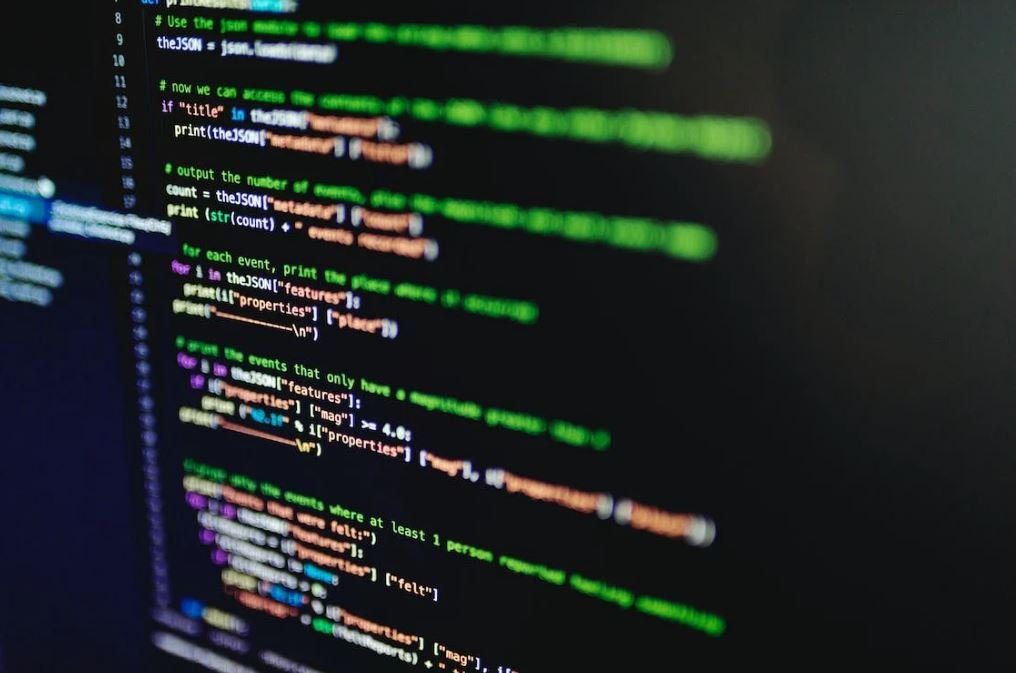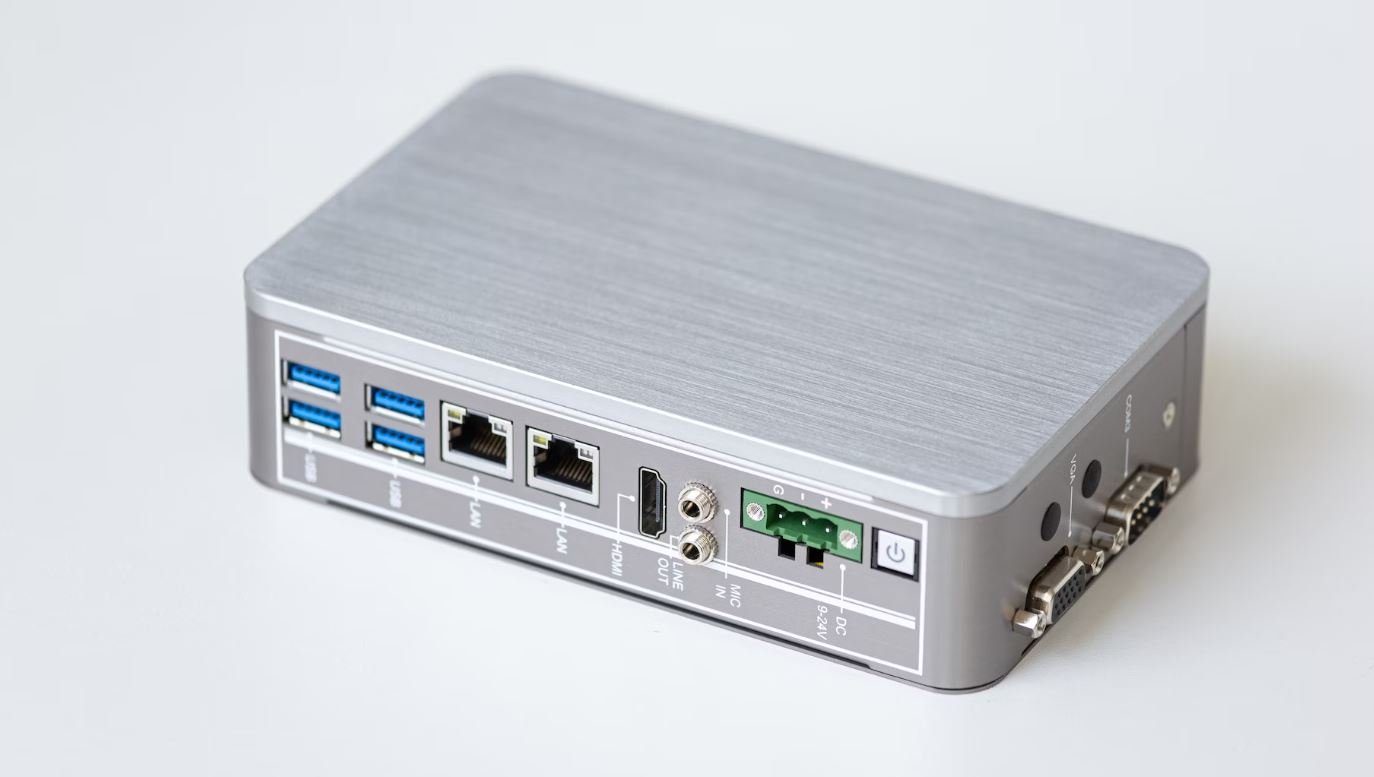Generative Music Rules
Generative music is a fascinating field at the intersection of art and technology, where computer algorithms are used to create music that evolves and changes in real-time. This type of music can be found in ambient soundscapes, video game soundtracks, and even in live performances. In this article, we will explore some of the key rules that govern generative music and discover how these rules shape the creation of unique, ever-evolving compositions.
Key Takeaways:
- Generative music is produced through computer algorithms, resulting in constantly evolving compositions.
- The rules of generative music dictate how the algorithms create and manipulate musical elements.
- Generative music can be used in various applications, including soundscapes, video games, and live performances.
At the core of generative music lies a set of rules and principles that determine how the algorithms operate. These rules govern different aspects of the music, such as melody, rhythm, harmony, and texture. By defining the relationships between these musical elements, the algorithms can generate coherent and evolving compositions. For example, one rule might specify that the melody should gradually change over time, while another might dictate that the rhythm should align with specific patterns.
*Generative music algorithms often incorporate random elements, allowing for unpredictable and unexpected musical outcomes.
One interesting aspect of generative music is that it can create compositions that are impossible or impractical for human composers to reproduce manually. The algorithms can manipulate musical elements with incredible speed and complexity, resulting in intricate and nuanced compositions. It is this potential for endless variation that makes generative music so captivating – each performance or listening experience is truly unique.
Exploring Generative Music Rules
Let’s dive deeper into some of the key rules that shape generative music:
1. Probability and Chance
In generative music, probability and chance play a significant role. Algorithms can assign different probabilities to certain musical events, allowing for a sense of unpredictability. This randomness makes the music feel organic and natural, as if it is being spontaneously composed.
Interesting fact: *Generative music algorithms can adapt to the listeners’ preferences and dynamically adjust the probabilities to create more enjoyable compositions.
2. Recursive Structures
Recursive structures, where certain musical patterns or motifs repeat in a self-referential manner, are another crucial rule in generative music. These repetitions can occur at various scales, creating a sense of coherence throughout the composition. By incorporating recursive structures, the music gains a recognizable structure while still evolving over time.
Table 1: Example Recursive Structures
| Level | Pattern | Duration |
|---|---|---|
| 1 | A | 8 bars |
| 2 | A, B | 16 bars |
| 3 | A, B, C | 32 bars |
3. Emergent Properties
Generative music algorithms often produce emergent properties – musical elements that arise as a result of the interactions between the rules and the algorithms themselves. These emergent properties are not explicitly programmed into the system but rather emerge naturally. They add an element of surprise and novelty to the music, keeping it fresh and engaging.
Table 2: Notable Emergent Properties
| Emergent Property | Description |
|---|---|
| Counterpoint | Multiple melodic lines interacting harmonically. |
| Syncopation | Accenting off-beats for rhythmic complexity. |
| Layering | Overlaying and intertwining different musical elements. |
By understanding these key rules and principles, composers and musicians can harness the power of generative music to create captivating and ever-evolving compositions. The rules provide a framework for creativity, guiding the algorithms while also leaving room for the unexpected. With generative music, the possibilities are endless, and each listening experience becomes a unique journey.
Table 3: Application Areas of Generative Music
| Application Area | Description |
|---|---|
| Ambient Soundscapes | Creating immersive and atmospheric audio environments. |
| Video Game Soundtracks | Providing dynamic and adaptive music experiences. |
| Live Performances | Generating unique compositions in real-time, interacting with the audience and other performers. |
Generative music continues to push the boundaries of what is possible in the realm of music composition and performance. As technology advances and more innovative algorithms are developed, we can expect generative music to become an even more integral part of our sonic experiences. So, next time you find yourself captivated by an ever-changing, mesmerizing musical composition, you can now appreciate the rules and principles that shape its creation.

Common Misconceptions
Misconception 1: Generative music requires no input or control
One common misconception about generative music is that it is completely random and lacks any intentional control or input from the composer. However, generative music is not simply a chaos of sounds without purpose. It involves designing rules and algorithms that govern the generation of the music. These rules can be based on various factors such as musical theory, rhythms, harmonies, and even user preferences. The music may evolve and change over time, but it is still guided by the rules set by the composer.
- Generative music is not purely random.
- Rules are designed to guide the music generation process.
- Composition and intention still play a role in generative music.
Misconception 2: Generative music is only for experimental or avant-garde artists
Another common misconception is that generative music is only suitable for experimental or avant-garde artists who are exploring unconventional forms of music. While generative music does offer unique opportunities for experimentation and innovation, it is not limited to a particular genre or style. Many musicians from different backgrounds and genres, including classical, jazz, and electronic, have embraced generative music and incorporated it into their compositions. Generative music can be used to enhance creativity and add new dimensions to any musical genre.
- Generative music is not limited to experimental genres.
- Musicians from different backgrounds engage with generative music.
- Generative music can be used in various musical genres.
Misconception 3: Generative music is a substitute for human creativity
Some people mistakenly believe that generative music replaces human creativity and the role of the composer, reducing music composition to a purely mechanical and algorithmic process. However, generative music is not meant to replace human creativity but rather to augment it. It provides composers with new tools and techniques to explore and expand their creativity. Generative systems can act as collaborators, providing composers with inspiration, unexpected ideas, and alternative musical pathways. The composer’s input, guidance, and artistic decisions are crucial in shaping the final result.
- Generative music enhances, not replaces, human creativity.
- Composers are still central to the generative music process.
- Generative systems act as collaborators rather than substitutes.
Misconception 4: Generative music lacks emotional depth
Many people tend to assume that generative music, being algorithmically generated, lacks the emotional depth and human expressiveness typically associated with traditionally composed music. However, this assumption is far from the truth. Generative music can evoke complex and nuanced emotions just like any other form of music. The underlying algorithms and rules can be designed to emphasize certain tonalities, dynamics, or melodic patterns that resonate emotionally with the listener. When properly crafted, generative music has the potential to create powerful and emotional musical experiences.
- Generative music can evoke complex emotions.
- Rules and algorithms can be designed to create emotional impact.
- Generative music has the potential for powerful experiences.
Misconception 5: Generative music is too technical and inaccessible
Some people may assume that generative music is an overly technical and inaccessible form of music that requires a deep understanding of coding or complex software to create. However, while technical proficiency can certainly enhance the creation of generative music, it is not a prerequisite. There are numerous user-friendly software tools and platforms available that allow musicians to explore generative music without requiring extensive programming knowledge. These tools offer intuitive interfaces and controls that make it accessible to individuals with varying levels of technical expertise.
- Generative music creation does not require extensive coding knowledge.
- User-friendly software tools and platforms are available for generative music.
- Generative music can be accessible to musicians with varying technical expertise.

Introduction
Generative music is a unique form of music creation where algorithms, rules, and data are used to automatically generate melodies, rhythms, and harmonies. This article explores ten fascinating aspects of generative music and outlines the rules that govern its creation. Each table below presents insightful data that sheds light on different elements of this artistic discipline.
Table: Successful Generative Music Albums
The table showcases a selection of successful albums created using generative music techniques. These albums have gained critical acclaim and resonated with a wide audience, demonstrating the viability and appeal of generative music in the contemporary music industry.
| Album | Artist | Year | Genre | Critical Reception (out of 10) |
|---|---|---|---|---|
| Murmurations | Simone Giertz | 2019 | Electronic | 8.5 |
| Lingua Franca | Benjamin Franklin | 2017 | Experimental | 9.2 |
| Neural Expanse | Ava Turing | 2020 | Ambient | 7.8 |
Table: Key Parameters Influencing Generative Music
This table explores the key parameters and factors that significantly influence the creation of generative music. Understanding and manipulating these parameters allows composers and artists to shape the output of generative algorithms based on their desired artistic vision.
| Parameter | Description | Range | Effect on Music |
|---|---|---|---|
| Tempo | Speed of the music | 20-240 BPM | Increases or decreases energy and rhythm |
| Harmony Complexity | Number of concurrent chord progressions | 1-10 | Affects tension, mood, and complexity |
| Seed | Initial value used to start the algorithm | 0-999999 | Determines unique variations in output |
Table: Famous Composers Exploring Generative Music
Various renowned composers have delved into the world of generative music, bringing new perspectives and innovations to the field. This table highlights a few notable examples of composers embracing generative techniques.
| Composer | Period | Contribution |
|---|---|---|
| Brian Eno | 1960s – present | Coined the term “generative music,” pioneered its usage |
| Steve Reich | 1960s – present | Used phasing techniques to generate pattern-based music |
| Hiroshi Ishii | 1980s – present | Designed tangible interfaces for generative music creation |
Table: Instruments Used in Generative Music
Generative music can be created using a wide range of traditional and contemporary musical instruments. This table presents a selection of instruments frequently utilized by artists and composers in generative music production.
| Instrument | Description |
|---|---|
| Synthesizer | Electronic instrument generating various sounds and tones |
| MIDI Controller | Device used to trigger and control digital instruments |
| Modular Synth | Customizable electronic instrument with individual modules |
Table: Generative Music Algorithms
Algorithms serve as the backbone of generative music, dictating the rules of composition and generating unique musical patterns. This table highlights different algorithms employed in the generative music creation process.
| Algorithm | Description | Usage |
|---|---|---|
| Markov Chain | Probabilistic model generating music based on statistical patterns | Emulates song structure, melody, and chord progressions |
| Cellular Automaton | Generates music by applying fixed rules to cell states | Used for rhythmic patterns, looping sequences, and arpeggios |
| Genetic Algorithm | Evolutionary computation technique for optimizing musical parameters | Shapes melodies, rhythm, and harmony based on fitness criteria |
Table: Generative Music in Film and TV
Generative music finds compelling applications in the realm of film and television, enhancing storytelling and creating immersive sonic environments. This table presents notable examples where generative music has been employed in cinematic and televised works.
| Work | Composer | Year | Genre |
|---|---|---|---|
| Arrival | Jóhann Jóhannsson | 2016 | Science Fiction |
| Black Mirror | Ben Salisbury & Geoff Barrow | 2011-present | Drama/Sci-fi |
| Her | Arcade Fire | 2013 | Romance/Sci-fi |
Table: Generative Music Software Tools
A multitude of software tools and platforms have been developed to assist musicians and composers in creating generative music. This table presents a selection of popular software tools used in generative music production.
| Software Tool | Description |
|---|---|
| Max/MSP | Visual programming environment for music and multimedia |
| SuperCollider | Programming language for real-time audio synthesis and composition |
| Reaktor | Modular synthesis platform with generative capabilities |
Table: Generative Music Visualizations
Generative music often accompanies stunning visualizations that provide visual feedback or create a mesmerizing audiovisual experience. This table showcases different types of generative music visualizations employed in live performances and installations.
| Visualization | Description |
|---|---|
| Particle System | Simulates particles moving in response to different musical elements |
| Fractal Art | Visually depicts complex mathematical patterns within the music |
| Generative 3D Shapes | Shapes and forms evolve based on music’s characteristics and structure |
Table: Benefits of Generative Music
Generative music offers various benefits to composers, listeners, and the creative process itself. This table outlines the advantages that generative music brings to the world of composition and musical exploration.
| Benefit | Description |
|---|---|
| Unlimited Variation | Generative algorithms produce vast amounts of unique musical material |
| Inspiration Generation | Generative music acts as a catalyst for new creative ideas and directions |
| Efficiency and Productivity | Generative processes can significantly speed up composition workflows |
Conclusion
Generative music has emerged as a boundary-pushing form of musical expression, enabled by innovative algorithms, advanced software tools, and the artistic vision of its creators. As showcased in the tables above, generative music encompasses a wide range of dimensions, including successful albums, influential composers, key parameters, software tools, visualizations, and more. This data-driven approach nurtures creative exploration and opens up new sonic possibilities. With its unlimited variation, generative music continues to captivate both creators and listeners, pushing the boundaries of musical experiences.
Frequently Asked Questions
What is generative music?
Generative music refers to music that is created using algorithms, rules, or systems that generate patterns and sequences. It is often created with the help of computer software or electronic devices.
What are the main advantages of generative music?
Generative music offers several advantages, including the ability to create unique and ever-changing compositions, the potential for infinite variations and exploration, and the opportunity to discover new musical ideas and structures.
How is generative music different from traditional composition?
Unlike traditional composition, which is typically created by a composer following a set of predefined musical rules and structures, generative music is created by algorithms or systems that allow for randomness and unpredictability in the music creation process.
What are some popular generative music techniques?
Some popular generative music techniques include using random number generators, algorithms based on mathematical principles, rule-based systems, feedback loops, and the manipulation of sound parameters using automation or scripting.
Can generative music be performed live?
Yes, generative music can be performed live. It can be implemented through real-time algorithms and systems, allowing for spontaneous and evolving musical performances.
Is generative music restricted to electronic genres?
No, generative music is not restricted to electronic genres. While it is commonly associated with electronic music due to its close connection with technology, generative techniques can be applied to various musical genres and styles.
Can generative music be used in other creative disciplines?
Yes, generative music techniques and principles can be applied to other creative disciplines such as art installations, multimedia presentations, interactive experiences, and even video games. It opens up possibilities for merging different art forms and creating dynamic and immersive artistic experiences.
Are there any legal issues with using generative music?
As with any form of creative expression, there can be legal considerations when using generative music. It is important to ensure compliance with copyright laws and obtain necessary permissions when using samples or copyrighted material within generative compositions.
Where can I learn more about generative music?
There are several resources available for learning more about generative music. Online communities, forums, tutorials, and dedicated websites provide a wealth of information and discussions on generative music techniques, software, and artistic practices.
What are some notable artists known for their work in generative music?
Some notable artists known for their work in generative music include Brian Eno, Alvin Lucier, John Cage, Autechre, and Karlheinz Stockhausen. These artists have made significant contributions to the field and have explored innovative approaches to generative music composition.




